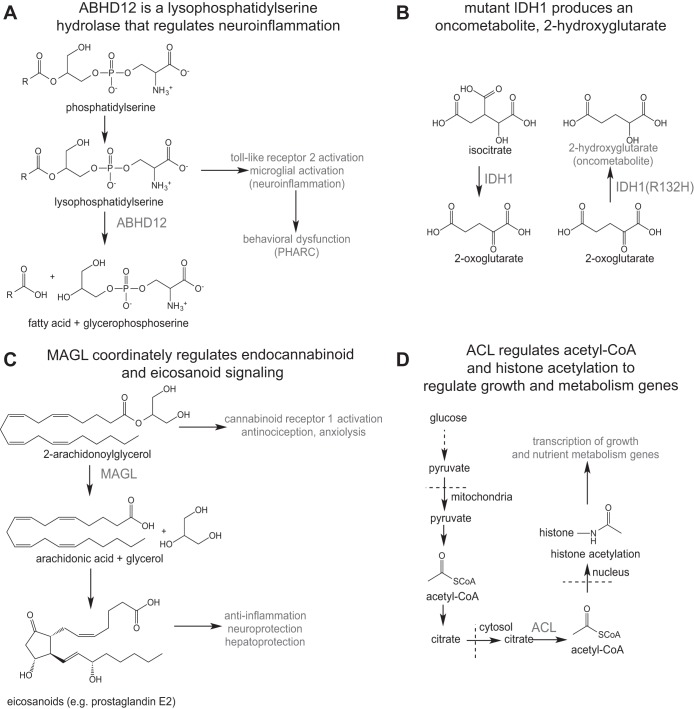Fig. 2.
Examples of metabolic pathways that have been discovered by metabolomics. A: ABHD12 was recently characterized as a lysophosphatidylserine hydrolase. ABHD12 inactivation leads to accumulations in lysophosphatidylserine, leading to neuroinflammation, and behavioral dysfunction and PHARC. B: while wild-type IDH1 converts isocitrate to 2-oxoglutarate, mutant IDH1 found in gliomas was shown to convert 2-oxoglutarate to an oncometabolite, 2-hydroxyglutarate, shown to inhibit demethylases and alter the epigenetic landscape to drive cancer pathogenicity. C: MAGL was found to control endocannabinoid (2-AG) signaling and also control the major arachidonic acid precursor pool for generating proinflammatory eicosanoids. MAGL blockade leads to accumulation in 2-AG and cannabinoid-dependent antinocicpetion and anxiolysis while also lowering arachidonic acid and eicosanoids and reducing inflammation that subserves neurodegeneration and hepatic injury. D: recent studies have uncovered that acetyl-CoA levels and metabolism directly control histone acetylation and transcription of growth and nutrient metabolism genes. See text for definitions.

